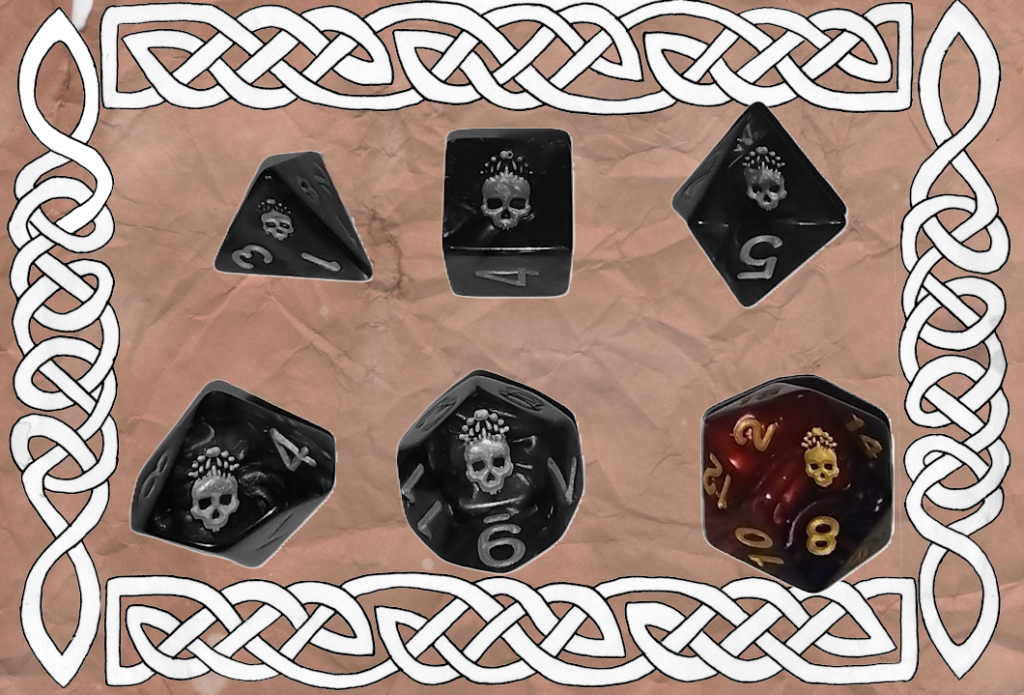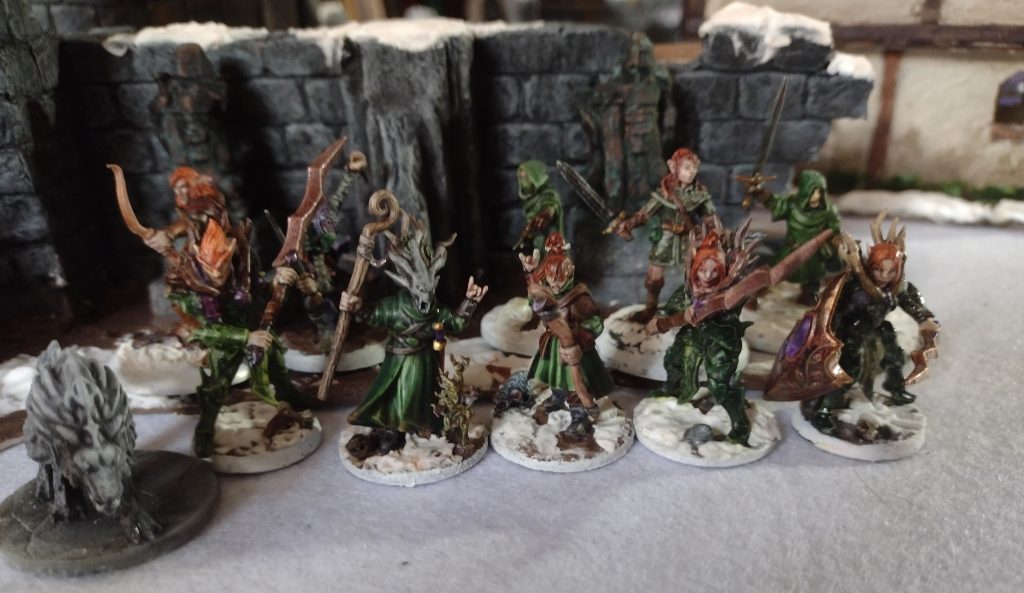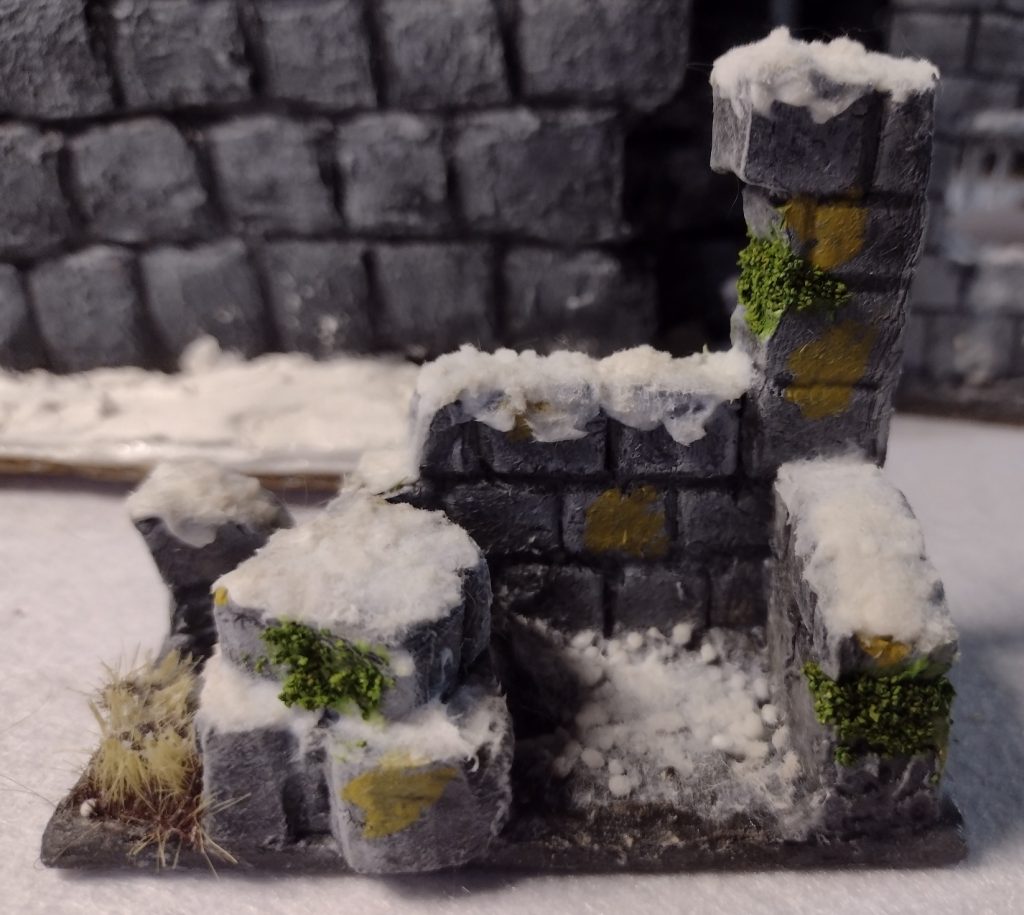(I probably should have written this before my previous post, but better late than never.)
Frostgrave is a mini agnostic skirmish wargame set in the frozen ruins of the city of Felstad by Joseph A. McCullough. Felstad was once a great city in a magic empire, its inhabitants producing objects of wondrous magic. But, the city was doomed by the actions of a wizard who lost control of some working and a great storm was unleashed shrouding the city in a cataclysmic blizzard that left behind only a frozen wasteland. The empire failed and its magic also.
After many centuries Felstad was almost forgotten but as the magical winter began to abate, those who remembered the tales of the city began to turn their thoughts to the ruins and the treasures that lie there hidden.
What you need to play.
Some miniatures to represent your warband and any of the dwellers of Felstad, some scenery, dice, Wizard sheet and the rule book.
Ideally your miniatures should be chosen to represent your warband, having the same equipment etc, but this isn’t a hard rule. You could play the game with tokens or anything you like, as long as you are having fun no one is going to tell you you are not following the rules.
The dice needed are d20s and the wizard sheet is included to photocopy/ scan in the rulebook, but it can also be downloaded from the Osprey website.
To represent the ruins of Felstad you’ll need some terrain and this can be as simple as some blocks or as elaborate as you want. The important thing is to have a lot of scenery as the game is designed to be played with a fairly crowded table.
The rulebook is nicely presented with some great illustrations and photos that will give you plenty of inspiration for your terrain pieces and your warband. The one thing that is a great incentive to try Frostgrave is that the rule book is relatively cheap round about the £20 to £25 mark at the time of writing for the 2nd edition. A PDF and Epub versions are also available from the Osprey website for £17.50,
The Warband
You create a small warband of up to 10 (although this number can be increased by some spells), the principal member of which is your wizard (or in some cases a witch – see what I did there?). It is the wizard who recruits the warband from their own funds.
Each wizard follows one of the 10 schools of magic available in the rulebook. There is a good range of schools to choose from and your wizard can be any one of the following; Chronomancer, Elementalist, Enchanter, Illusionist, Necromancer, Sigilist, Soothsayer, Summoner, Thaumaturge and Witch. The school determines which spells you can learn. Each school has allies, neutrals and enemies among the other schools and this determines which spells you can use and how difficult they are to cast.
To aid the wizard you can also recruit an apprentice whose stats are generated from the wizards, with a few adjustments. The apprentice is after all not as skilful as their tutor. They also share the same list of spells that their tutor has. It isn’t compulsory to have an apprentice but it is probably a wise move.
As well as the apprentice, the wizard can recruit another eight members for the warband. The wizard has 400 gold crowns with which to hire their followers. There are 9 specialists detailed in the rulebook and a wizard can have up to four of these in a warband. Standard soldiers are less expensive, which there are 6 to choose from including thugs and thieves who will join a warband for no fee. I get the feeling that the thugs and thieves probably all wear red shirts, but maybe I am just an old cynic.
With warbands created you are ready to play one of the 20 scenarios included in the rulebook. You can play these as one offs or as a campaign.
Campaign Play
The campaign rules cover a lot of ground. There are rules for permanent injuries, in campaign play being reduced to 0 health isn’t always the end and there is a chance that your soldiers who are on 0 health might survive, missing the next game if they don’t make a full recovery. For Wizards and apprentices there are a greater range of possible outcomes if they’ve hit 0 health including the possibility of a permanent injury.
Wizards in campaign play gain experience that increases their level and allows choosing, to improve either a stat, a known spell or learn a new spell.
In campaign play treasure is also dealt with differently from just determining the winner as in the one off game. Treasure in campaign play is rolled for on a table with results for gold, potions, magic items, magic weapons and armour, spell scrolls and grimoires. The rules include tables and descriptions for all of the list except gold which is worked out on the initial treasure table.
Campaign play also has the option of buying and selling loot, hiring replacement soldiers (although you are still limited to four specialists and a maximum warband size of 10) and equipping the wizard’s base of operations which is another aspect that gives campaign play some depth.
I can’t help kicking myself for not grabbing a copy of the rules a lot earlier. But there is some consolation that the game is “tried and tested” and has a good number of supplements as well as a dedicated magazine “Spellcaster” that includes loads of content to give your game some extra tweaks. Its available from Osprey, Drive-through rpg/ wargames vault and probably your local gaming shop. The supplements include a lot of extra content to make your games even more fun and helpfully the 2nd Edition also includes an appendix detailing how the changes from 1st Edition affect the supplements that have been released before 2nd Edition.
Miniature Battles Score
I give Frostgrave a solid D20 in my scoring scheme. I think I am going to be getting a lot of mileage out of the Frostgrave game.

You can find out more about Frostgrave and Joseph A. McCullough at his blog The Renaissance Troll


